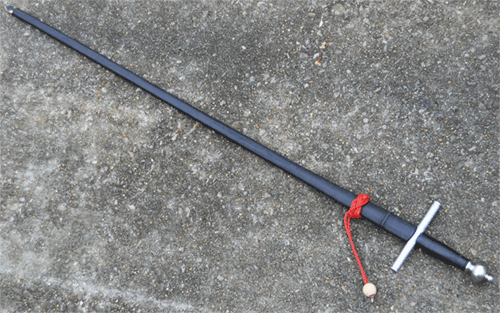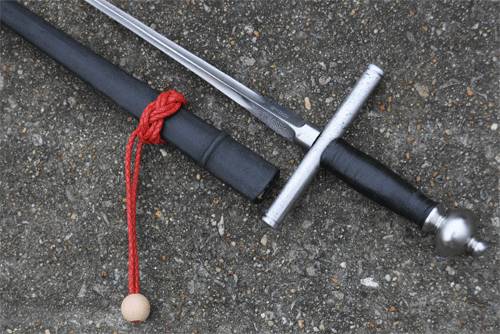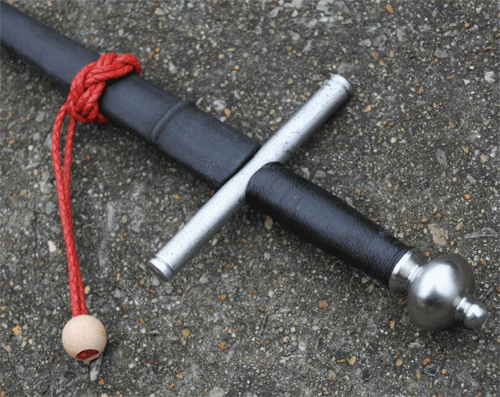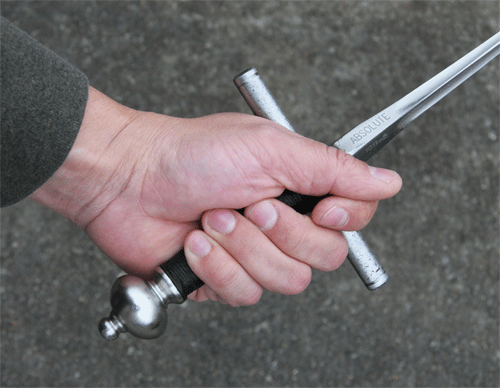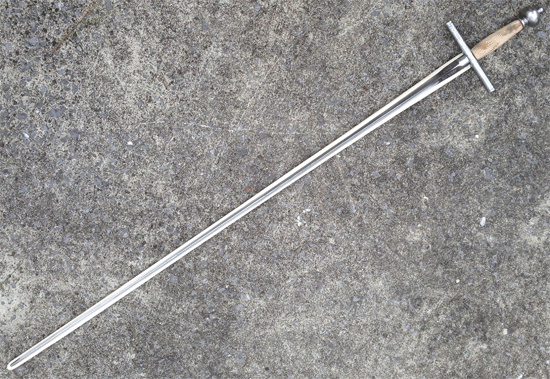I was not able to linger over details on this piece due to time constraints, but I really like the thing. It balances about 2" below the cross and feels just like a tiny-but-dangerous sword, which is the idea, of course. I clipped the standard practice epee blade back to the place where the V section becomes a solid triangle-shape. It's blunt, but not quite as blunt as the stock bated blade. What I'm left with is a very attractive setup for this simple hilt (cheap, too, at about $30 shipped). It feels great!
This is the first rapier scabbard I've made and I found it to be no more or less challenging than any others I've worked on. Even the very strange blade section and very thick ricasso of half-moon section presented no great problem. The scabbard is not bulky and it holds the blade perfectly. The sword will not fall out when inverted, but releases with a slight pull and draws without binding anywhere. Chamois on the scabbard, thin calf on the grip. I didn't have time to properly burnish and polish the scabbard, unfortunately. The knot is primarily fantasy, but is inspired by an historical suspension method. It's positioned here to balance the sword at a 45 degree angle and can be slid up or down the scabbard as needed. I positioned the stop riser without testing the balance. It's where it would be for a full-size sword but a bit high for this one. It would suspend the sword vertically, which would be fine for me but would drag in that mode on a 10 year old.
Edward Lee provided the Hanwei pommel for this project.
Mark Millman provided additional blade options I decided to reserve for a project for my son.
Julien Mesenge provided the grip leather.
The cross is cut from a discarded test tub stand that was HEAVILY rusted. I didn't fuss over the finish, as you can tell. This was the most challenging component because the lower part of the epee tang is small and square. I drilled a round hole and slowly filed it to square, fitting as I worked. I inletted the lower part of the cross as a seat for the robust ricasso. As you can see, the blade is just slightly wider than that inlet. To get it flush, I would need to file another few mm from that area. Again, there was no time or inclination to be that fussy.
The grip is poplar. It's a good fit to the strange tang (which become a threaded rod about 2 inches above the square section. I wrapped the cross in sandpaper and sanded the shape of the cross into the base of the grip to prevent the grip from turning as it wears. The pommel is threaded, so the whole thing is held together by compression.
